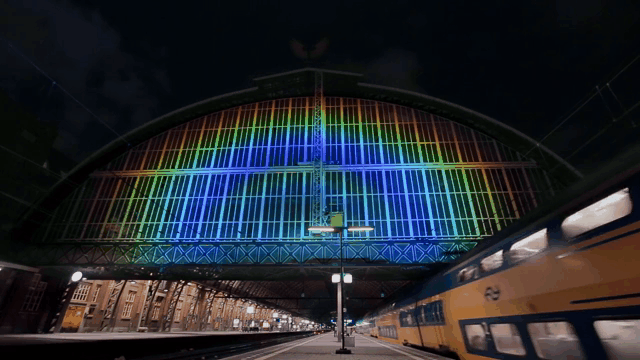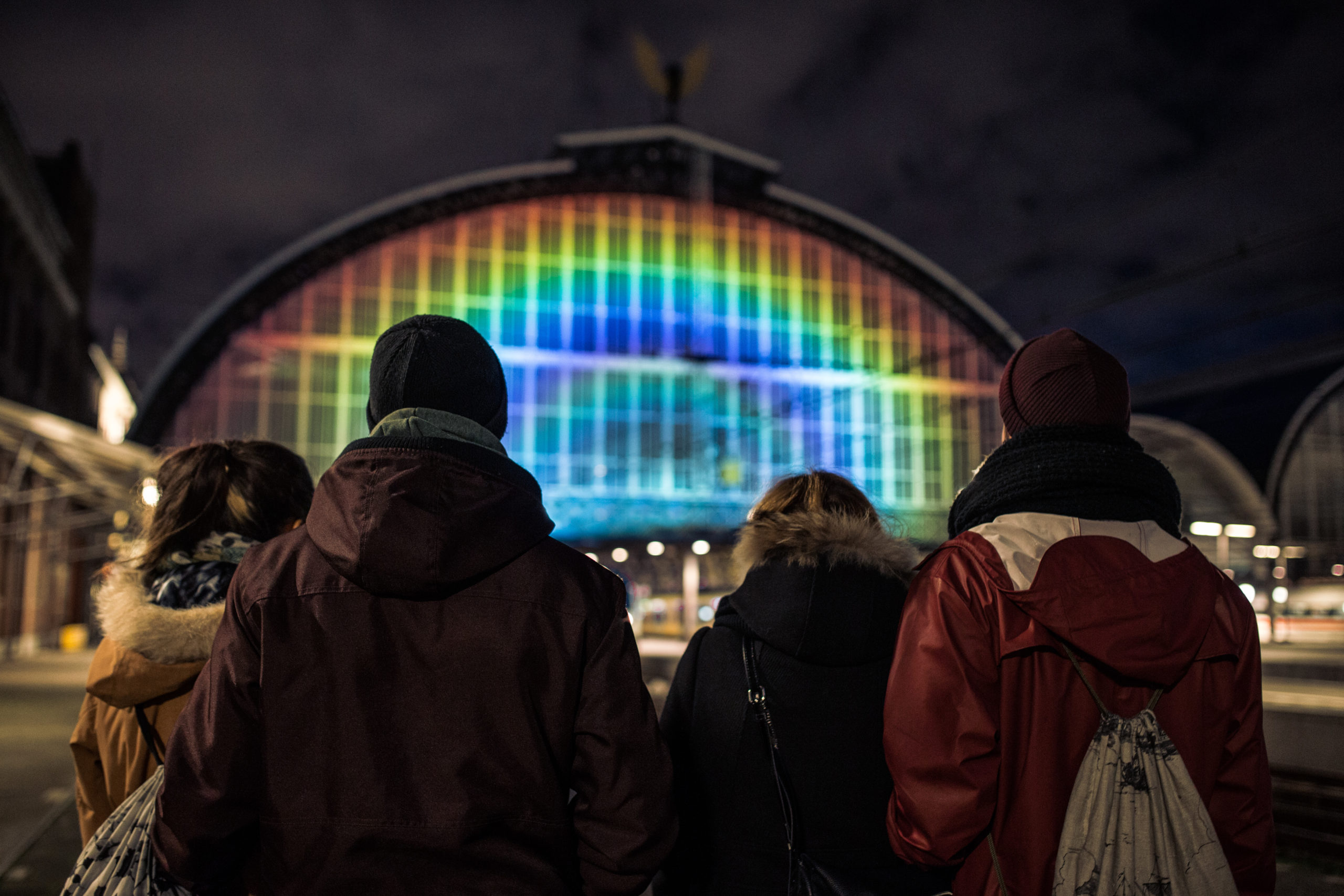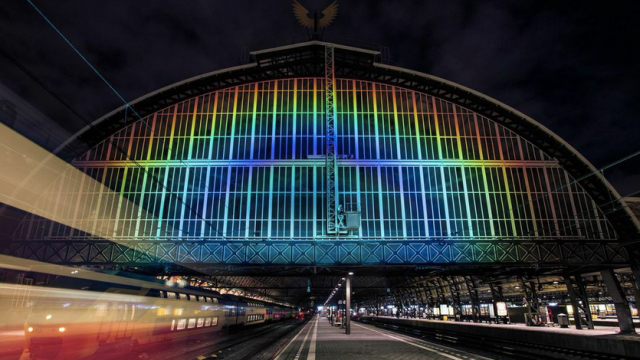It’s not very often that the fields of advanced photonics and installation art meet. But in Amsterdam this week, visitors to the city’s Central Station are getting a look at what happens when liquid crystal optic technology is used to something completely unscientific: Make public art.
The installation celebrates Central Station’s 125th birthday, and it’s the product of Daan Roosegaarde, the young Dutch artist we’ve covered on what seems like dozens of occasions on Gizmodo: There was his project to turn smog in Beijing into diamonds. And his glow-in-the-dark bike path.
But for the central station’s birthday, Roosegaarde teamed up with a Dutch astronomical instrument scientist named Dr Frans Snik and an American scientist, North Carolina State University’s Dr Michael Escuti. Escuti is one of the leading researchers developing novel ways to disperse light using liquid crystal optics, for use in technologies ranging from nanotechnology to telecom to lasers to plain old projectors. Astronomy is a big part of the game too, and some of the liquid crystal tech he’s developing through his company, ImagineOptix, is reportedly used in the European Extremely Large Telescope.
But in Amsterdam, Escuti and Snik have put their work with advanced optics to a very different use: Helping Roosegaarde build an installation called Rainbow Station, a massive 150-foot-wide rainbow that appears for just a half hour every evening at dusk. For Roosegaarde, the project is “a unique place for travellers, an experience you can not download.” For the scientists involved in the project, it was an experiment in how their work can be repurposed for civilian uses.
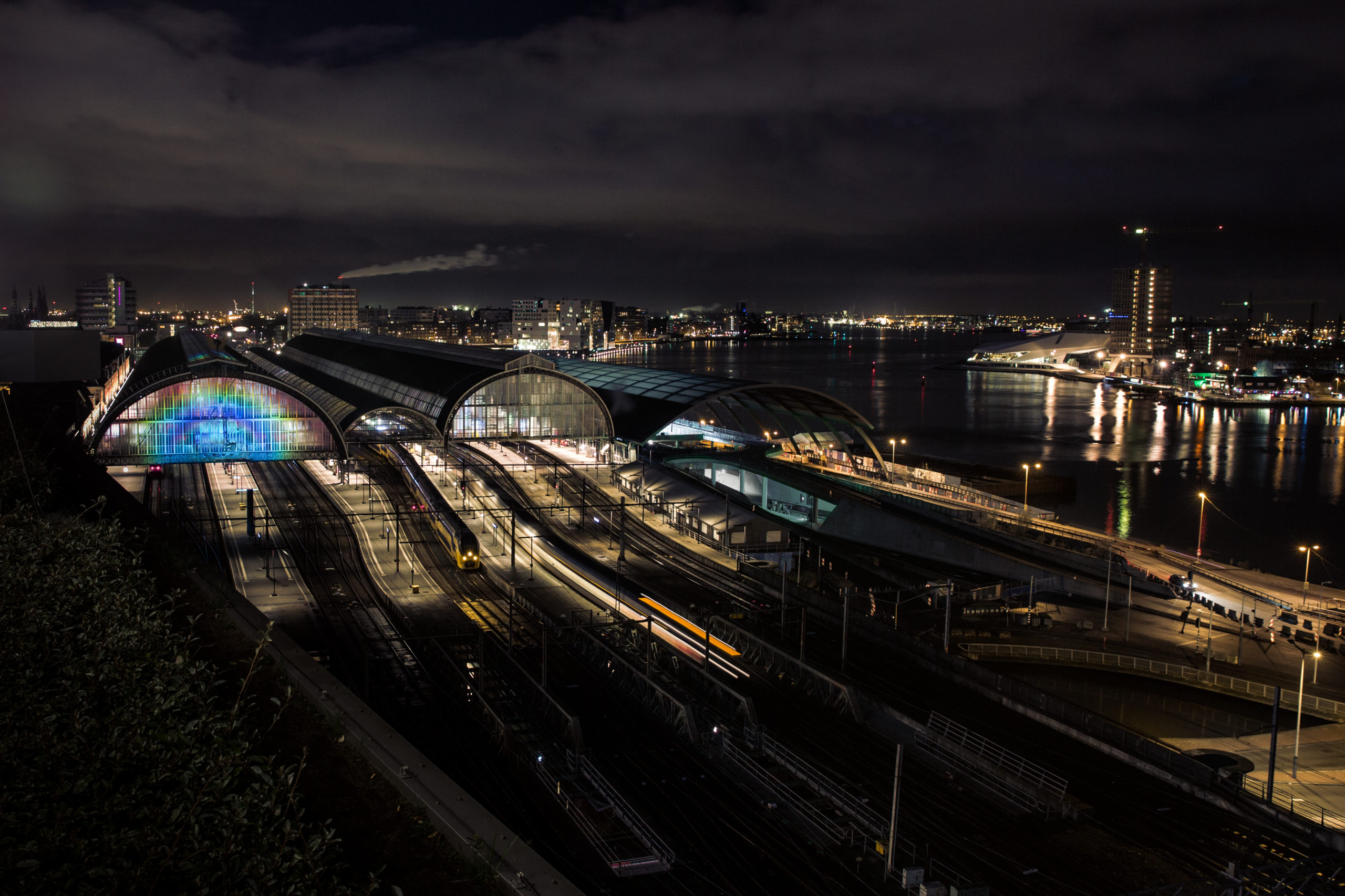
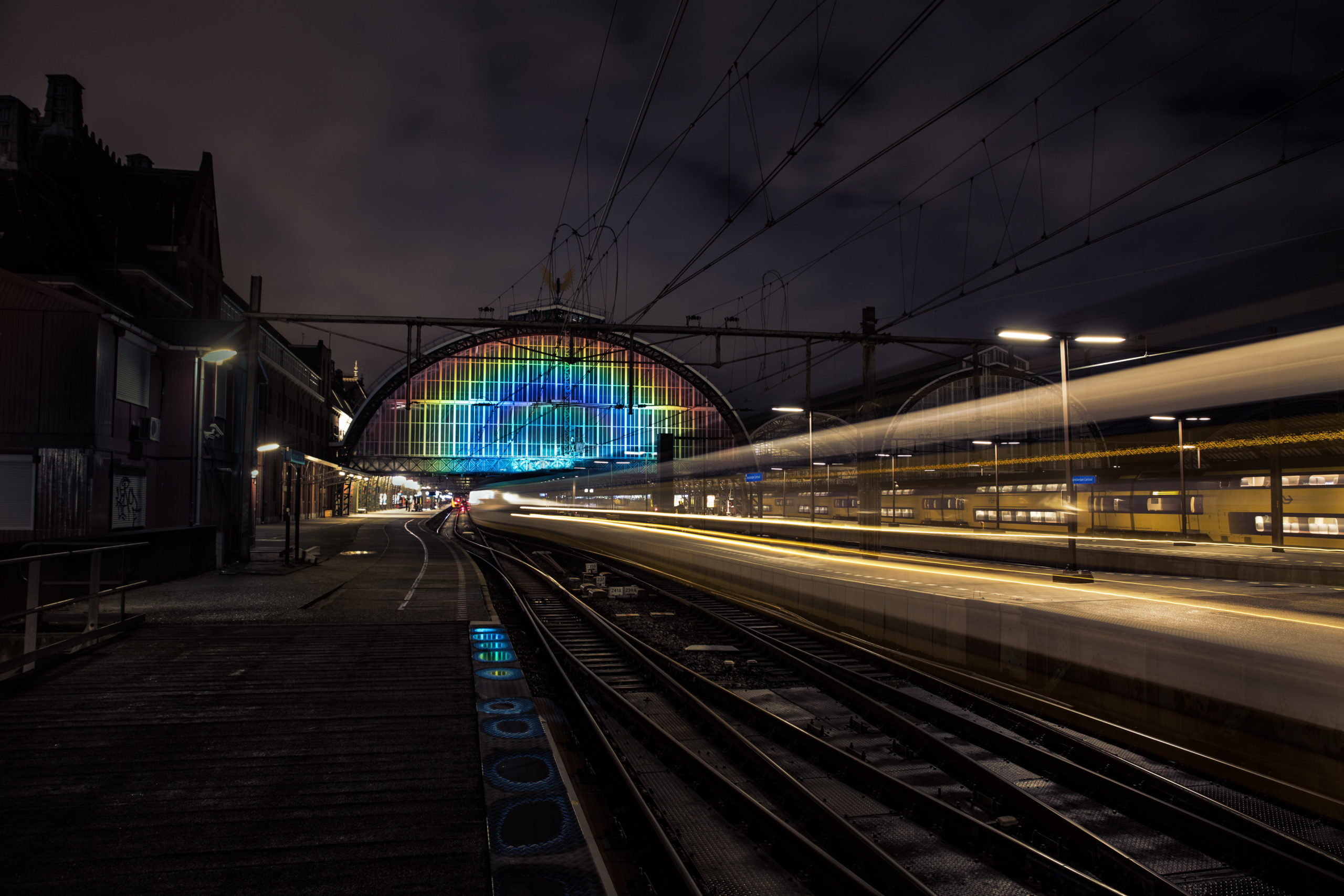
The installation uses something called a spectral filter — a filter that takes white light and then disperses it into the full range of colours in the rainbow without losing any hues or light to leakage, based on a technology called geometric phase holograms. In this case, Escuti created a filter with a film of liquid crystal that dispersed light from a four kilowatt spotlight into a perfect rainbow on the glass facade of the train shed.
The liquid crystal filter is so precise and efficient, it only leaks 1 per cent of light that passes through it, and according to Escuti, it “actually includes many more colours than our typical smartphones and TVs can produce, or that our digital cameras can capture.”
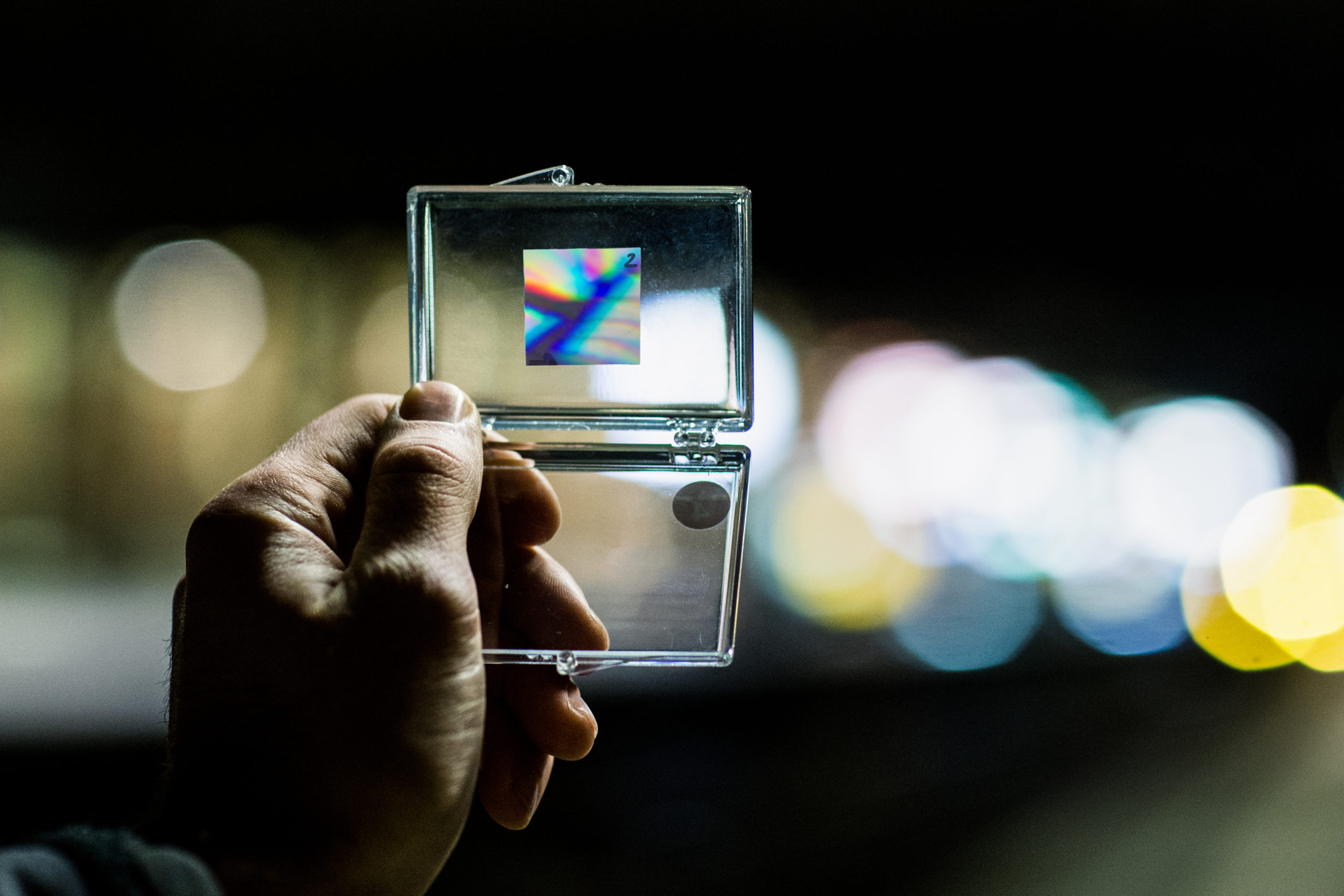
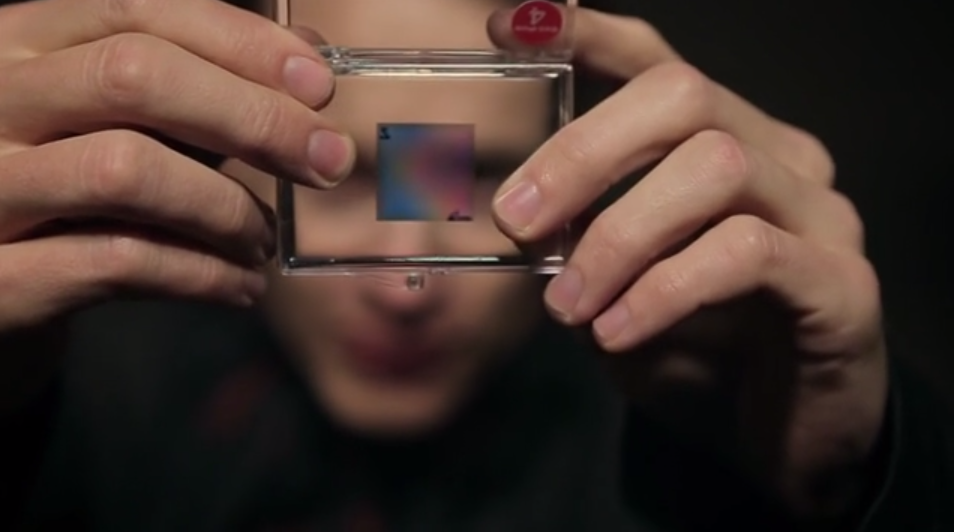
Here’s how North Carolina State explains the technology:
Conventional techniques to create a rainbow, such as a prism or a regular diffraction grating, have at least one of two disqualifying limitations for this project: either the colour dispersion isn’t wide enough (meaning the colours would be washed out) or the majority of the light would “leak” (meaning it would go almost anywhere but into the rainbow). But Escuti’s technology puts about 99 per cent of the light into the rainbow, allowing only about one per cent of the light to leak out.
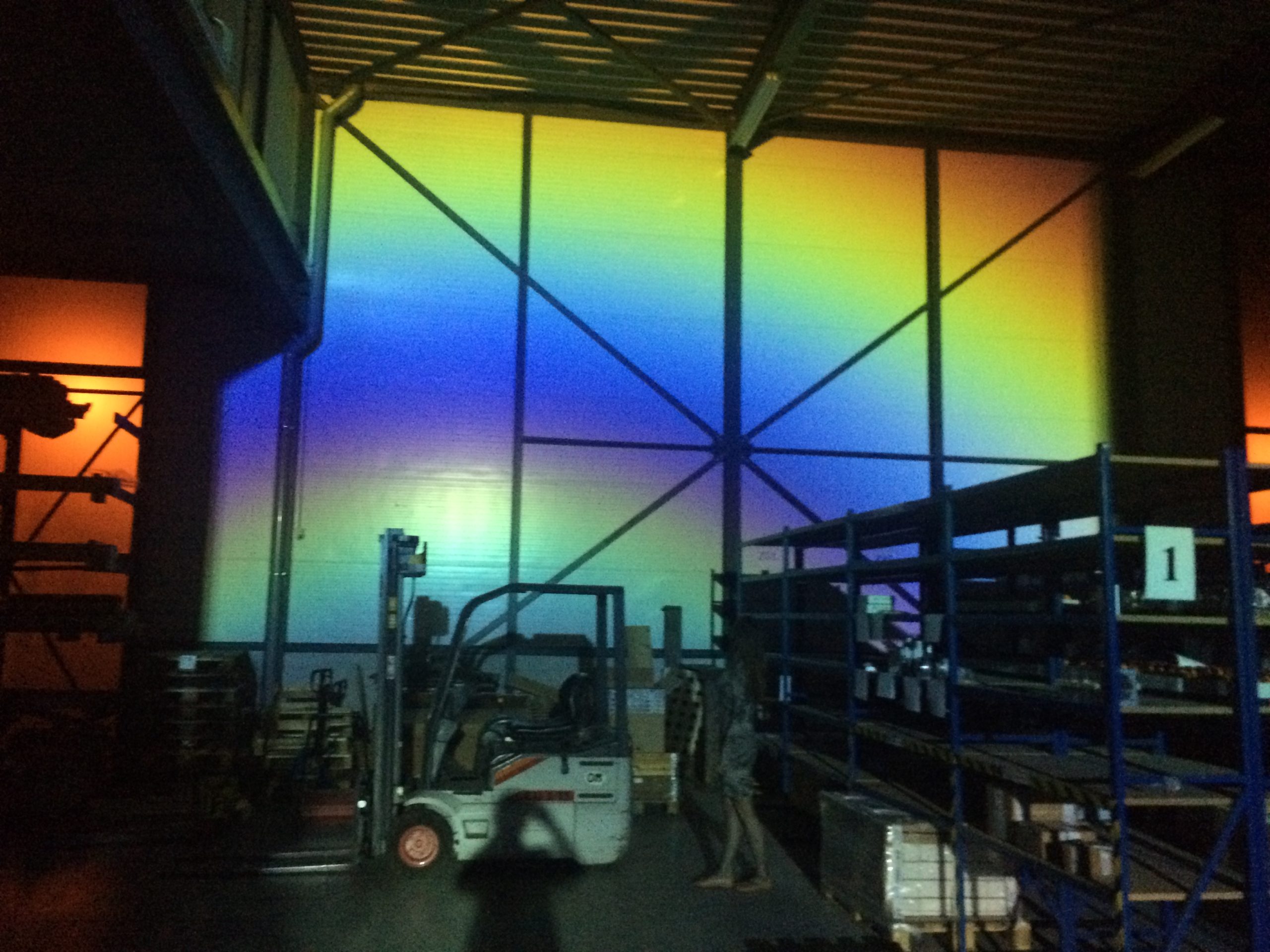
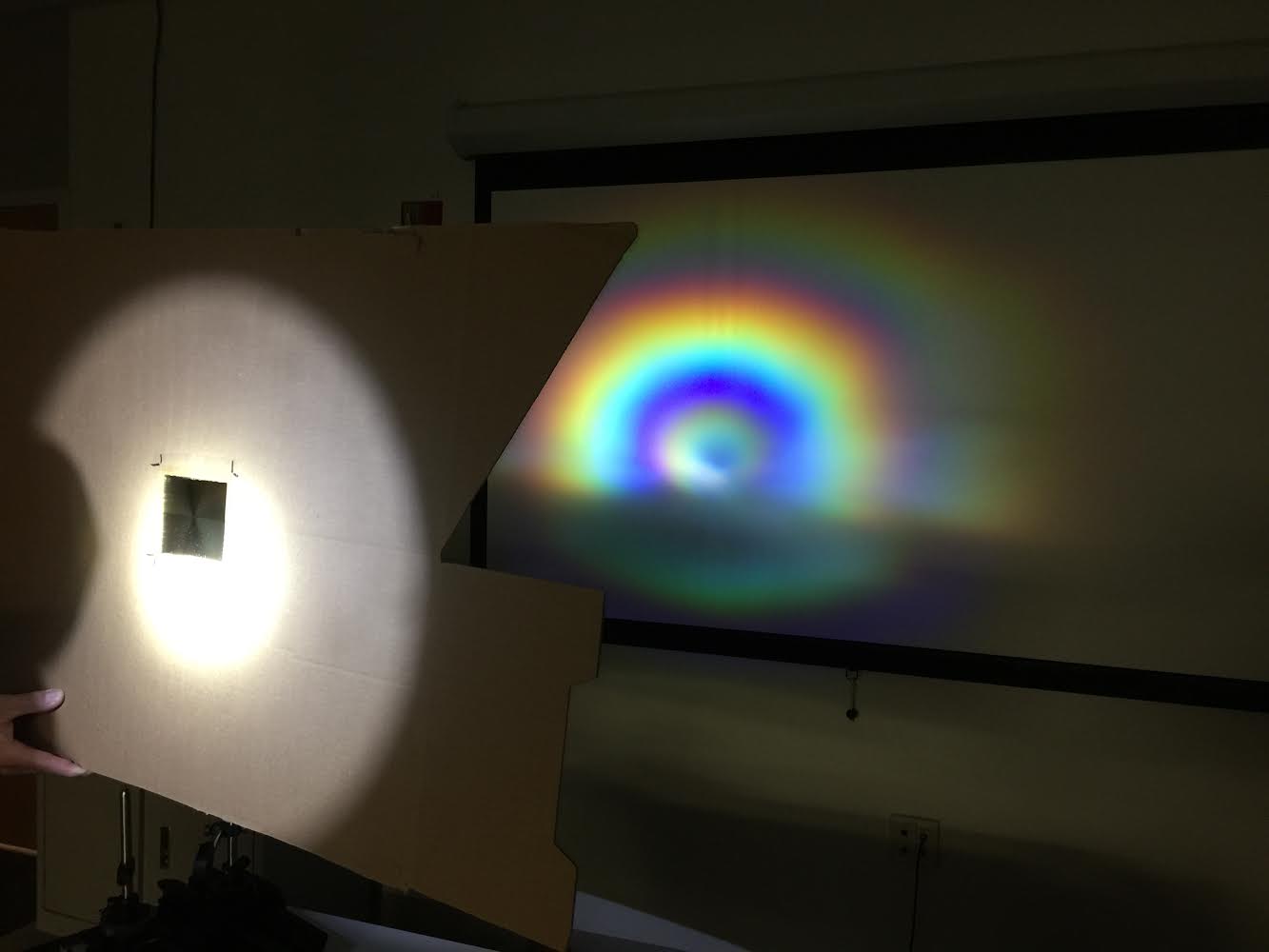
Testing the filter at Studio Roosegaarde.
Meanwhile, Snik — who recruited Escuti to the project after having worked with him on astronomy projects — explains that they had been developing the filter “for research on exoplanets (planets orbiting stars other than the sun),” but were able to repurpose it for a terrestrial project. If you’re passing through Amsterdam at around twilight over the next year, be sure to hang around for a few minutes to check it out. [NC State; Studio Roosegaarde]
